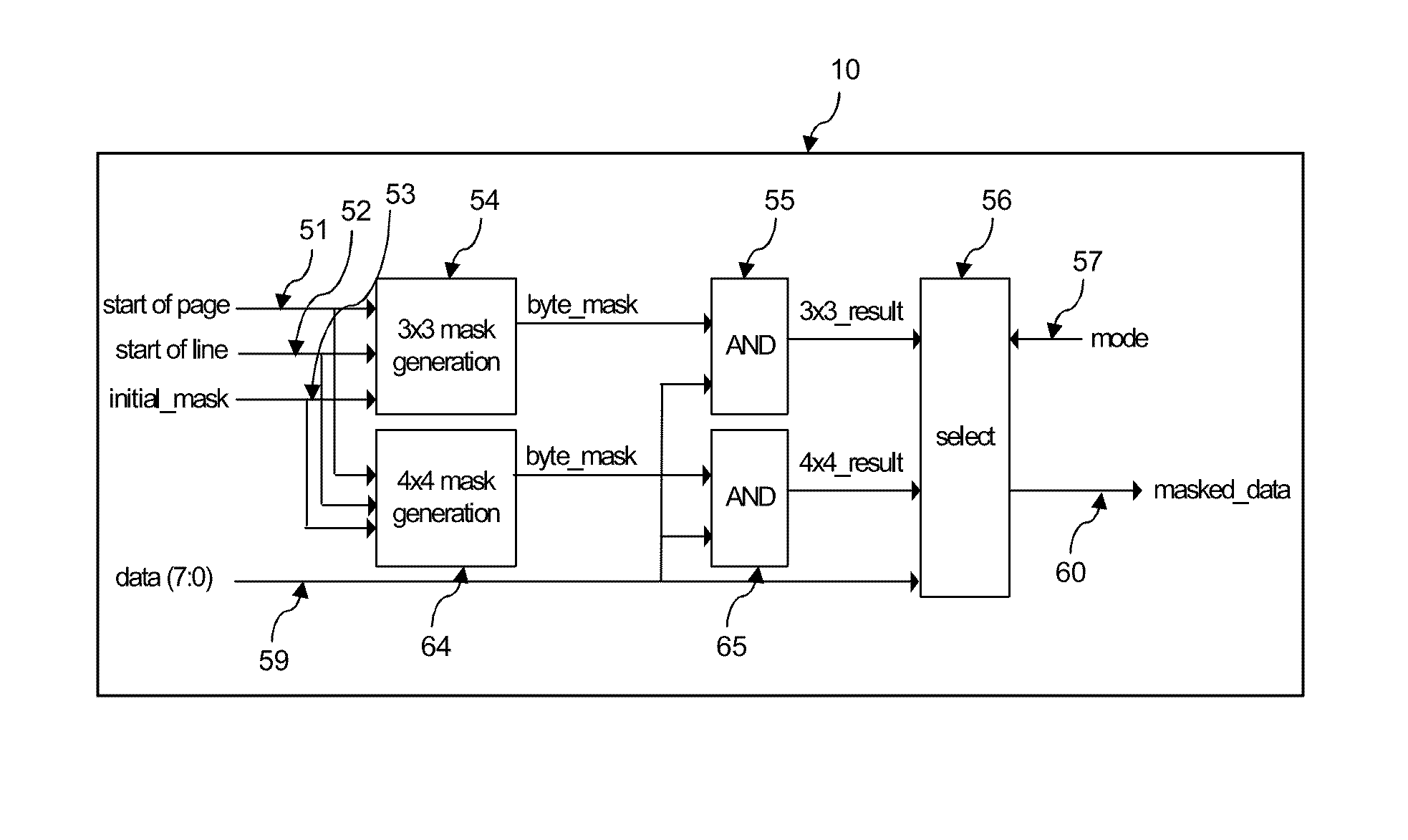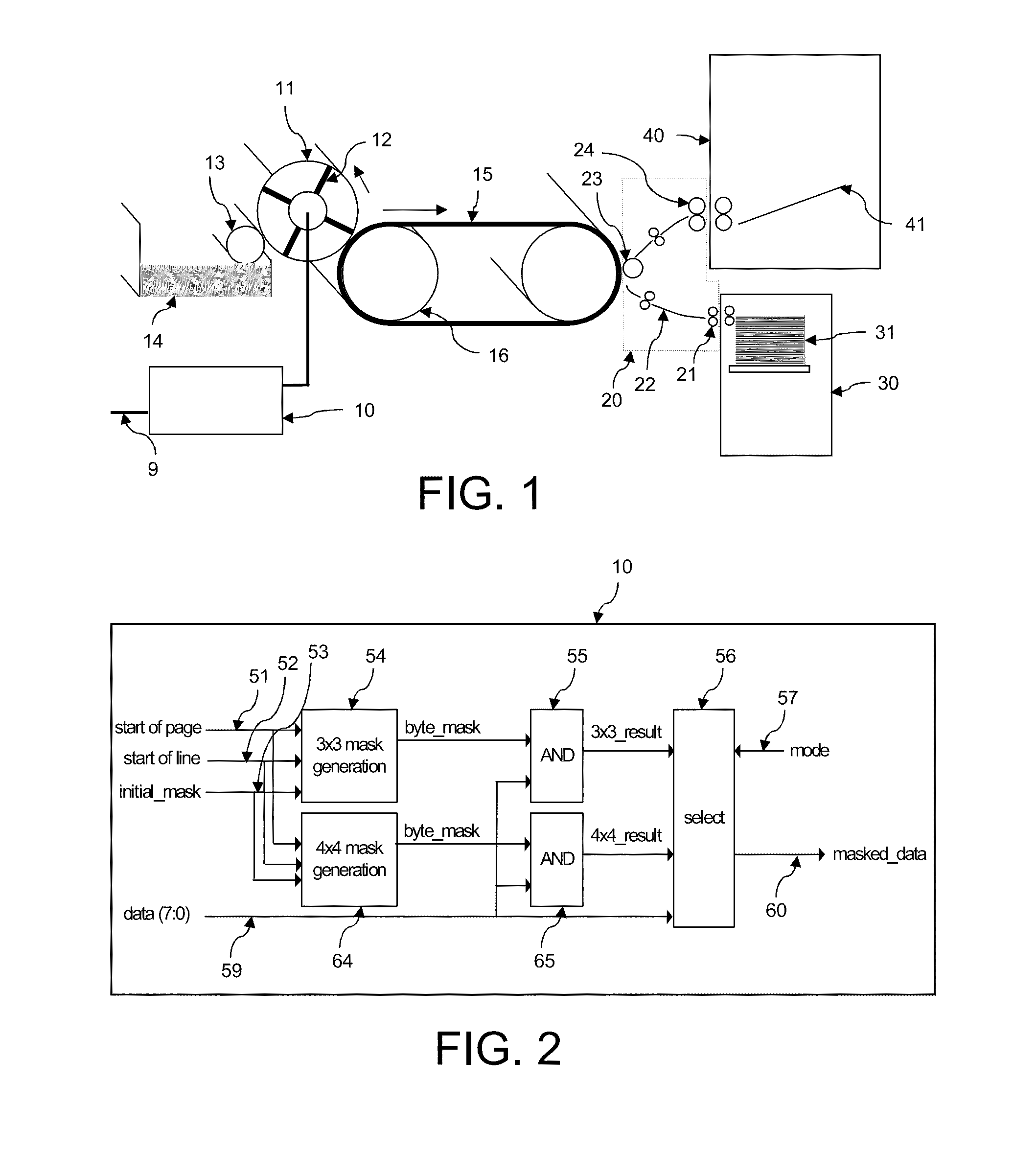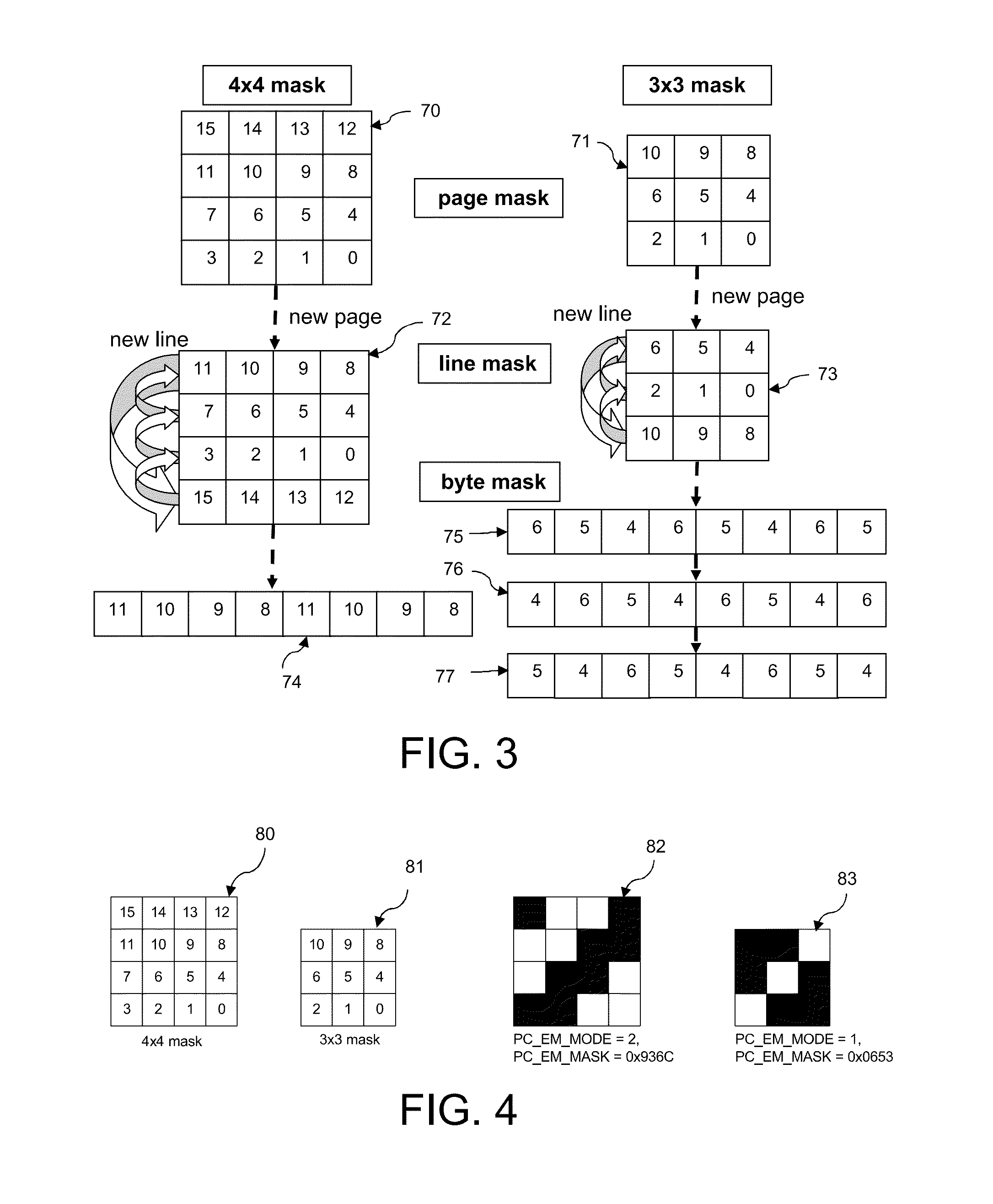Method for adjusting the amount of marking material in a printed image
a technology of marking material and printed image, which is applied in the field of adjusting the amount of marking material in printed images, can solve the problems of not being able to change the appearance or characteristics of images, and the complexity of electronic circuits, so as to reduce the amount of marking material
- Summary
- Abstract
- Description
- Claims
- Application Information
AI Technical Summary
Benefits of technology
Problems solved by technology
Method used
Image
Examples
Embodiment Construction
[0025]The present invention will now be described with reference to the accompanying drawings, wherein the same reference numerals have been used to identify the same or similar elements throughout the several views.
[0026]FIG. 1 shows a print engine for printing binary images. The print engine comprises a converter 10 to convert image data into print signals, an image forming module 11 to apply marking material corresponding to the print signal, the marking material being brought in contact with the image forming module by a developing roller 13, a transfer module 15 for transferring the marking material to the image fixing module 20, a receiving material input module 30 and a finished output product module 40. In this embodiment, the marking material is conventionally toner, which comprises a resin that is softened by heat.
[0027]The binary image data are supplied to the print engine through a data connection 9. This may be a conventional USB- or Firewire-bus or any other suitable d...
PUM
 Login to View More
Login to View More Abstract
Description
Claims
Application Information
 Login to View More
Login to View More - R&D
- Intellectual Property
- Life Sciences
- Materials
- Tech Scout
- Unparalleled Data Quality
- Higher Quality Content
- 60% Fewer Hallucinations
Browse by: Latest US Patents, China's latest patents, Technical Efficacy Thesaurus, Application Domain, Technology Topic, Popular Technical Reports.
© 2025 PatSnap. All rights reserved.Legal|Privacy policy|Modern Slavery Act Transparency Statement|Sitemap|About US| Contact US: help@patsnap.com



